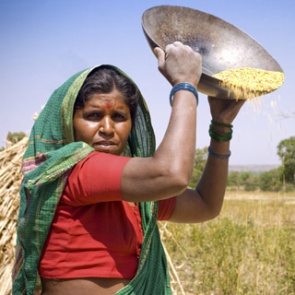Research Portfolio | Development Economics
What makes anti-poverty programs go viral? You!
Getting the well-connected to spread the word helps more people learn about microfinance programs in rural India.
Anti-poverty researchers and policymakers often wrestle with a basic problem: How can they get people to participate in beneficial programs? Now a new empirical study co-authored by two MIT development economists shows how much more popular such programs can be when socially well-connected citizens are the first to know about them.
The economists developed a new measure of social influence that they call “diffusion centrality.” Examining the spread of microfinance programs in rural India, the researchers found that participation in the programs increases by about 11 percentage points when well-connected local residents are the first to gain access to them.
“According to our model, when someone with high diffusion centrality receives a piece of information, it will spread faster through the social network,” says Esther Duflo, the Abdul Latif Jameel Professor of Poverty Alleviation at MIT. “It could thus be a guide for an organization that tries to [place] a piece of information in a network.”
